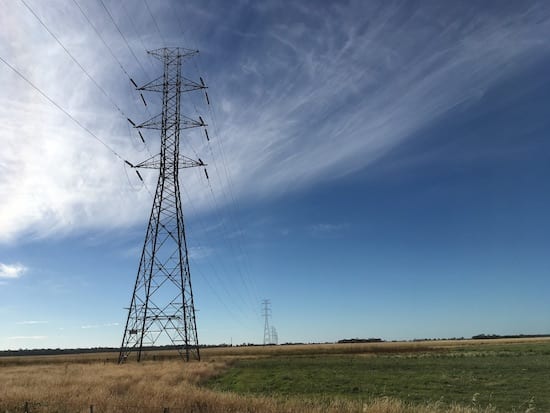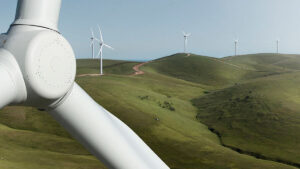The Australian Energy Market Operator says the country is facing a hot and dry summer with added risk of extreme weather and bushfires, but the addition of 2,100MW of new wind, solar and battery storage should mitigate the risk of any blackouts or load shedding.
In its summer readiness program outlined on Friday, AEMO says the new capacity means that this summer it will not need as much emergency reserve as it did last summer.
But it warns of risks caused by the high temperatures, and concerns about the availability of some fossil fuel generators, and says 240MW of thermal generation is still under question.
“The Bureau of Meteorology is forecasting a hotter and drier summer which, coupled with other risks we have identified, suggest we have a challenging summer awaiting us,” AEMO chief executive Audrey Zibelman said in a statement.
“But while we know that unexpected events can and do happen, particularly when the power system is under pressure and most prone to failure, AEMO is confident the plans we have made and the targeted actions we have taken in collaboration with the wider energy industry and governments, have appropriately equipped us to tackle any unforeseeable events the upcoming summer might bring.”
 This graph above shows the comparison between record demand (red), last year’s peak demand (purple), and the forecast peaks for this summer (orange).
This graph above shows the comparison between record demand (red), last year’s peak demand (purple), and the forecast peaks for this summer (orange).
AEMO’s annual Electricity Statement of Opportunities (ESOO) issued in August forecast a “one in three” risk of outages in Victoria, assuming that it sat on its hands and did nothing. That, predictably, created a rich source of headline writing for mainstream media, and an equally rich source of scare-mongering from conservatives and the Coalition government.
But AEMO has done something, as it says it would, and will have up to 930MW of short and long term emergency reserves in place as part of its Reliability and Emergency Reserve Trader (RERT) mechanism, to help it deal with anticipated stresses on the grid, and unexpected outcomes such as bushfires or the sudden loss of major thermal generators.
This compares to more than 1,140MW called upon last summer, and because AEMO has also changed the design of the scheme it is expected to cost less than the $6 a household billed for last summer’s preparation.
This summer’s capacity includes 132MW of demand response from its three-year trial with the Australian Renewable Energy Agency (ARENA) – of which 70MW is in Victoria and 20MW in South Australia, and an additional 57MW will potentially become available this summer, including 25 MW in Victoria and South Australia.
AEMO is seeking a minimum of 405 MW of short and medium notice RERT panel agreements (in Victoria and South Australia) which allow AEMO to rapidly enter into reserve contracts if required to manage further unexpected risks, such as demand exceeding forecast expectations and unplanned events resulting in a reduction in generation capacity.
“Our continued operational efficiencies and refinements in our forecasting methodologies, together with the increased capacity of approximately 2,100 megawatts of new generation capacity, means we did not need to procure the same level of strategic reserves as last summer,” Zibelman said.
Specifically, AEMO said its planning for Victoria is supported by increased wind and solar generation capacity (its first large scale solar projects have come on line) and two new utility-scale battery installations that will be operational by summer at Ballarat (30 MW/30 MWh4) and at the Gannawarra solar farm (25 MW/50 MWh).
For context, the NEM’s total registered generation capacity in July 2018 was around 56,000MW, of which wind and solar represented around 6,000MW. So the grid has plenty of thermal generation in place – the big question for AEMO is how much of this will be available in the middle of a heatwave.
It expects a summer of record, or near record, peak demand, although the timing of those peaks will be pushed back into the early evening by the growth of rooftop solar PV. In South Australia, the grid with the highest penetration of rooftop solar PV, the peak last summer was recorded at 8pm.
“While underlying demand (the total energy used by consumers) is expected to be higher, the growing contribution of rooftop PV means this is not expected to translate to higher grid demand,” AEMO says.
AEMO was criticised in many quarters for not taking sufficient preventative action in the two most controversial events that hit South Australia in the system black in September 2016, and the load-shedding in February.
Under Zibelman, AEMO has become more cautious and more prepared. Its preparations this summer include detailed analysis and consultation with the owners of generators, networks and consumers, improved forecasting and more training.
It held its second annual joint emergency exercise of the National Gas Emergency Response Advisory Committee (NGERAC) and National Electricity Market Emergency Management Forum (NEMEMF) in Sydney on August 28, has work-shopped a number of state-specific desktop scenarios sessions with each state government, and will hold readiness briefings every seven days with governments and other stakeholders over summer and autumn.
AEMO says it is expecting almost 6,000 megawatts of new wind and solar to be operational in the next two years, which it says “will alleviate the short-term risk of involuntary load shedding during summer peak periods.”
“However, mid to longer term strategic planning and resource investment, such as those outlined in AEMO’s Integrated System Plan, will be necessary to not only manage the power system during peak summer periods, but also to ensure ongoing reliability and stability of Australia’s power system throughout the year.”










